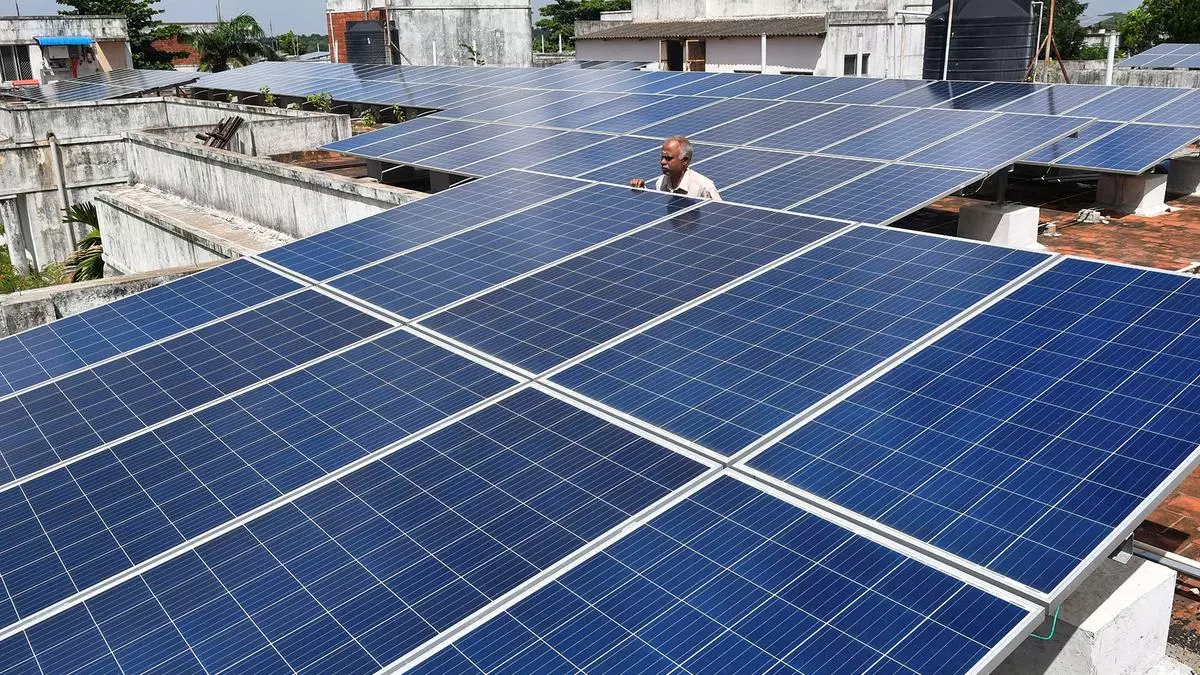In a bid to shield farmers in the country from the adverse effects of climate change, the government has adopted a two-pronged approach – adaptation and mitigation.
Adaptation strategies include creating drought and flood-resistant crop varieties, implementing efficient water management techniques, and providing a cushion through crop insurance in the event of extreme natural calamities, according to Devesh Chaturvedi, Secretary (Agriculture and Farmers’ Welfare), Government of India.
Addressing the businessline’s Agri and Commodity Summit here on Friday, he said mitigation efforts include promoting natural farming to reduce chemical input use and improve soil health. The government also aims to use carbon market incentives to encourage farmers to adopt climate-smart practices. This comprehensive approach seeks to ensure food security and farmer livelihoods in the face of a changing climate.
ICAR’s role
Talking about the impacts of climate change on the agricultural landscape, he cited the instances of droughts, unseasonal rains, and heat waves that have adversely affected crop yields and farmer livelihoods.
He said the ICAR (Indian Council of Agricultural Research) has developed biofortified and climate-smart varieties that can withstand droughts and floods, ensuring productivity levels don’t go down.
He stressed the need for swift dissemination of these varieties from breeders to farmers through close collaboration between research institutions, state governments, and the central government.
Chaturvedi emphasised the importance of water management, acknowledging the limited irrigation infrastructure in the country, and underscoring the need for efficient water utilisation. He called for the adoption of micro-irrigation techniques, rainwater harvesting, and the use of solar pumps to minimise reliance on groundwater and promote sustainable irrigation practices.
Cutting input costs
Stating that Pradhan Mantri Fasal Bima Yojana is the biggest such scheme in the world in terms of the number of farmers covered, he said the scheme succeeded in reaching a substantial portion of the farming community.
Highlighting the potential benefits of natural farming in reducing input costs, he said the the government was promoting this method to encourage farmers to move towards chemical-free farming.
“There are farmers who are doing it successfully for years. They have developed their own protocols which now research is also validating. We need to promote this method which is sustainable and ensures safer, healthier food for consumers. This is going to be a transformative initiative aimed at addressing soil health degradation caused by excessive chemical input use,” he said.
Posing challenges
In his welcome address, businessline Editor Raghuvir Srinivasan said the year 2024 was the warmest year on record. The temperature was over 1.5° C higher than the long-term average.
“The country has been going through climate change since 2001 and over the last few years, the minimum temperature has been rising. All these pose great challenges to agriculture and its stakeholders, including scientists. We are now challenged to come out with climate-resilient crops,” he said.
In 2024, the amounts of carbon dioxide and methane in the atmosphere hit all-time highs. Carbon dioxide reached 422 ppm (parts per million), up 2.9 ppm from 2023. Methane reached 1897 ppb (parts per billion), a 3 ppb increase from the previous year.
The businessline Agri and Commodity Summit 2025 is presented by Nabard and co-powered by Federation of Seed Industry of India (FSSI) in association with Yara.
The Associate Partners are NCDEX, Indofil, Bayer, Hindustan Urvarak & Rasayan Ltd, Kribhco Agri, NSE, Aqua Group and Tamil Nadu Agricultural University. The Banking Partner is State Bank of India while the Broadcast Partner is NDTV Profit.







Leave a Comment